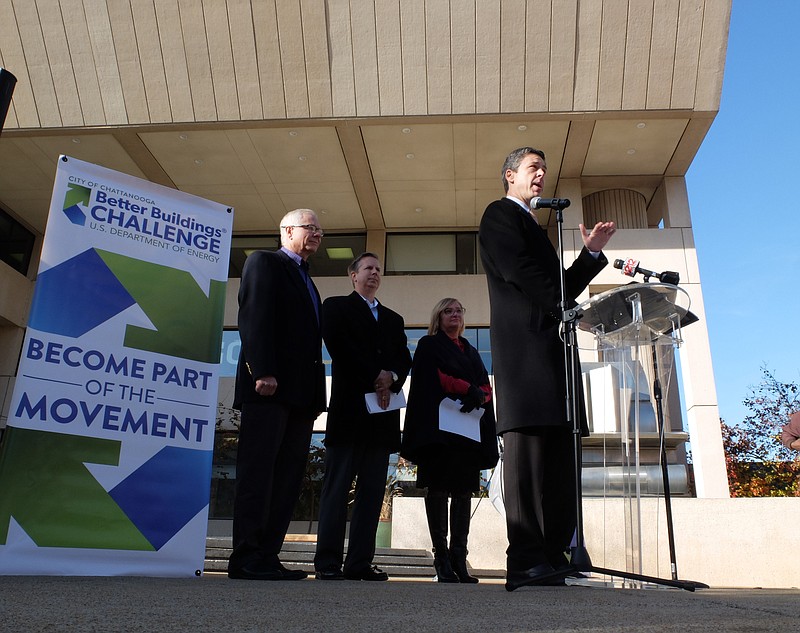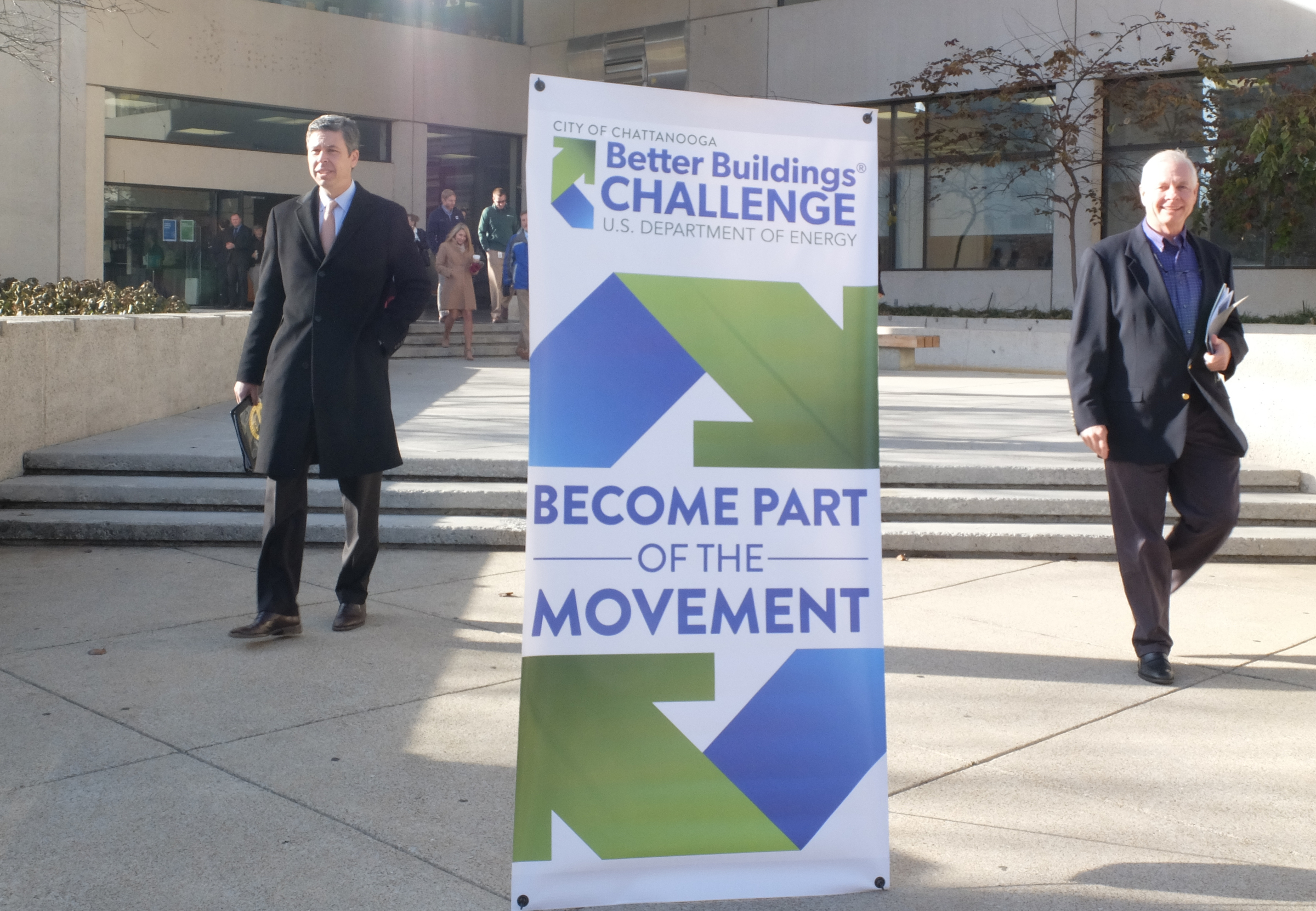Chattanooga's Public Library will get new lighting, heating and air conditioning over the next couple of years to cut its electricity consumption by more than 40 percent and showcase the city's efforts to conserve energy as part of the nationwide Better Buildings Challenge.
Chattanooga Mayor Andy Berke said the city has pledged to cut energy use in its 200-plus municipal buildings by 20 percent over the next decade, and the library will be one of the most visible and significant parts of that effort in 2017.
"We have a chance over the next 10 years to substantially reduce the energy consumption of our city government and this right here is our showcase project," Berke said during a news conference outside of the 40-year-old library at Broad and 10th streets. "When you can improve the quality of a building and make sure it is a better place, as well as making it more energy efficient, then you have a home run, and that's what this is today."
The city expects to spend about $1.5 million, including $65,000 provided to Chattanooga through TVA's Energy Right program, to install energy-efficient lights and heating and cooling equipment for the 108,000-square-foot, three-story library. The library will replace more than 800 existing lights with 108 LED lights, which are expected to last longer, use less energy and save on maintenance expenses.
Erik Schmidt, director of sustainability for the city of Chattanooga, estimates the upgrade should cut the library's annual $184,451 electric bill by more than $60,000. The energy savings should be enough to power 75 homes, Berke said.
The investment will require more than 20 years to pay off for the city, but Schmidt said the project in a highly visible downtown building should help demonstrate the potential energy savings possible throughout the city.
"The library is an educational facility that is in the heart of our Innovation District next to both EPB and TVA, and this gives us an opportunity to showcase the advantages of energy-efficient lighting and HVAC systems to hopefully encourage more people to apply the same concepts in their own homes and businesses," he said.
Berke also said the project "will help us with that internal knowledge we need to know so we can improve our goal of improving sustainability." The mayor said Chattanooga would not have achieved its growth and appeal over the past half century had not government and businesses taken steps to limit pollution and promote sustainable practices.
The Better Buildings Challenge is an initiative of the U.S. Department of Energy to encourage governments and businesses to reduce energy use by 20 percent by 2025.
The city of Chattanooga, the University of Tennessee at Chattanooga and Erlanger hospital have joined the challenge. UTC has more than 3 million square feet of building space and Erlanger has more than 2.5 million square feet of buildings.
"That's a tremendous amount of building space in Chattanooga that is now committed to more energy efficiency," Berke said.
The city of Chattanooga, which has more than 2 million square feet of building space, has already cut about 7 percent of its 2013 base usage of about 250 million kilowatt hours a year.
Most of those savings have come from improved lighting, temperature controls and equipment to better regulate operations of heating and cooling fans and machines, Schmidt said.
Contact staff writer Dave Flessner at dflessner@timesfreepress.com or at 423-757-6340.

